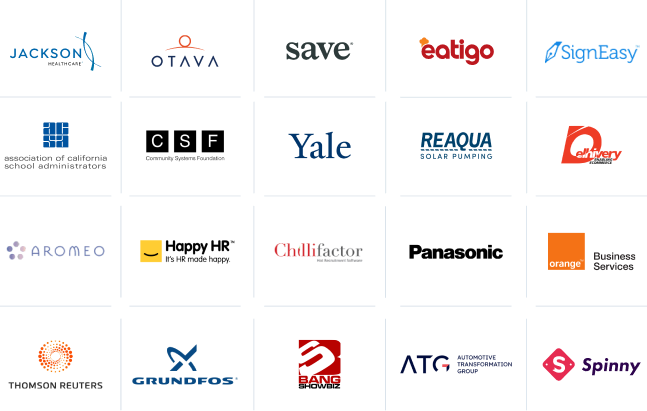Is Data Analytics the same as BI?
While data analytics and business intelligence (BI) are related concepts, they are not the same. Let’s understand the difference between the two:
Data Analytics: Data analytics involves examining, transforming, and analyzing data to uncover insights, patterns, and trends. It involves applying statistical and analytical techniques to raw data to gain meaningful insights and make informed decisions.
Data analytics focuses on extracting valuable information from data sets, often using tools and technologies like statistical modeling, data mining, machine learning, and data visualization.
Business Intelligence (BI): Business intelligence refers to the technologies, strategies, and practices organizations collect, integrate, analyze, and present business information.
It involves gathering and organizing data from sources, transforming it into meaningful information, and delivering it to decision-makers through reports, dashboards, and visualizations.
Overall, data analytics focuses on data analysis to extract insights, while business intelligence involves collecting, integrating, analyzing, and presenting data to support decision-making and provide a comprehensive view of the business.
Data analytics is a subset of business intelligence, as it contributes to the analytical component of BI.
How can data analytics and business intelligence help a business grow?
Data analytics and business intelligence have become indispensable tools for businesses seeking sustainable growth in today’s data-driven world. Here are some key ways in which data analytics and business intelligence contribute to business growth:
Make informed decisions: By analyzing vast amounts of data, businesses can identify patterns, trends, and correlations. It can help them make crucial decisions across various departments, such as marketing, sales, operations, and finance increasing the likelihood of making sound, data-driven choices that drive growth.
Identify market opportunities: By analyzing market trends, consumer behavior, and competitor performance, businesses can identify emerging opportunities and potential gaps in the market.
This insight enables companies to develop innovative products or services, tailor marketing strategies, and enter new markets, fostering growth and expanding their customer base.
Optimize operations: By analyzing operational data, businesses can identify bottlenecks, inefficiencies, and areas for improvement.
Businesses can reduce costs, improve productivity, and deliver products or services more efficiently by making data-driven optimizations.
Understand customer behavior: Data analytics and business intelligence provide businesses with valuable insights into customer preferences, purchasing patterns, and satisfaction levels.
Gain competitive advantage: Data analytics and business intelligence enable businesses to gain a competitive edge in their industry.
Businesses can identify unique selling points and differentiate from competitors by analyzing competitor data, market trends, and consumer insights, helping to develop targeted marketing strategies, refine offerings, and respond to market changes.
How does business intelligence and data analytics work together?
Business intelligence (BI) and data analytics work together to provide organizations with valuable insights and support data-driven decision-making. Here’s how they complement each other.
Data Collection and Integration: Business intelligence systems gather and integrate data from various sources, such as databases, spreadsheets, and external systems. Data analytics relies on this consolidated data to perform in-depth analysis and extract meaningful insights.
Data Cleaning and Preparation: BI systems often include data Clean and well-prepared data is crucial for accurate data analytics.
Data Exploration and Visualization: Business intelligence tools provide dashboards, reports, and visualization to help users understand trends, patterns, and relationships within the data. Data analytics leverages these visualizations to identify areas for further analysis and effectively communicate findings.
Descriptive Analytics: Business intelligence systems typically provide descriptive analytics, which involves summarizing historical data and presenting key performance indicators (KPIs).
Data analytics can further explore descriptive data by applying statistical techniques, data mining, or machine learning algorithms to uncover insights, correlations, and causations within the data.
Diagnostic and Predictive Analytics: Data analytics goes beyond descriptive analytics by utilizing diagnostic and predictive analytics. It involves analyzing historical data to identify factors that contributed to results.
Predictive analytics, on the other hand, uses historical data to build models and predict future outcomes. These advanced analytics techniques enable organizations to make proactive decisions.
Decision Support: Business intelligence systems provide decision support capabilities by presenting aggregated data, trends, and performance metrics. Data analytics enhances this decision support by providing more granular insights, predictions, and recommendations based on sophisticated analysis techniques.
Organizations can make more informed and precise decisions by combining BI with data analytics.
Combining BI with data analytics: BI systems and data analytics work cyclically. Organizations use business intelligence to monitor and measure their performance, and data analytics helps identify areas for improvement.
Insights gained through data analytics can then be fed back into the BI system to refine KPIs, reports, and data collection processes, ensuring continuous improvement in decision-making and business operations.
What is the relationship between data analysis and data analytics?
A few key characteristics of backend technologies separate the good from the great.
First and foremost, a good backend technology will be scalable. It handles increasing users and data without becoming bogged down or slow.
Another important characteristic is extensibility. A good backend technology will allow new features and functionality to be added easily without disrupting the existing codebase.
Finally, a good backend technology will be robust and reliable. It withstands heavy usage and traffic without crashing or experiencing any major issues.
What comes under the tech stack for backend development?
Data analysis and data analytics are closely related concepts, with data analytics being an extension of data analysis. Here’s how they are connected:
Data Analysis: Data analysis refers to examining, inspecting, and interpreting data to uncover patterns, trends, and insights. It involves applying various techniques and methods to understand the data, identify relationships, and derive meaningful conclusions.
Data analysis focuses on exploring and summarizing data to understand its characteristics better and extract relevant information.
Data Analytics: Data analytics encompasses a broader scope and builds upon data analysis. It involves applying advanced techniques and algorithms to large datasets to extract insights, make predictions, and take data-driven actions.
Data analysis forms the foundation of data analytics. It involves the initial exploration and examination of data to understand its structure and relationships.
Data analytics further analyzes data by employing advanced statistical and analytical techniques to extract more profound insights, perform predictive modeling, and support decision-making processes.










